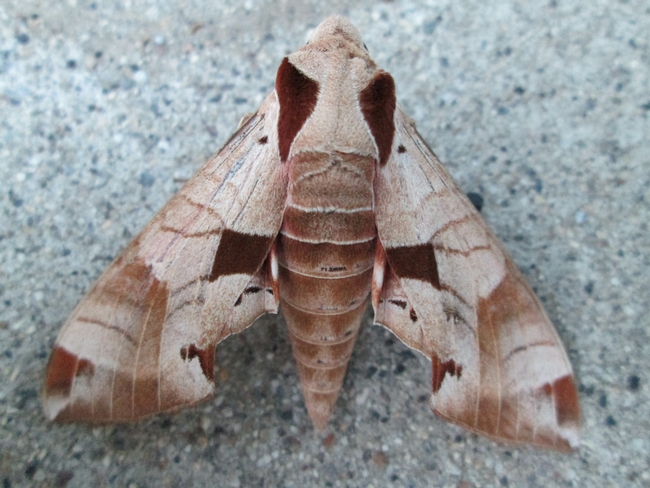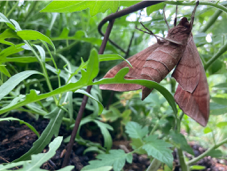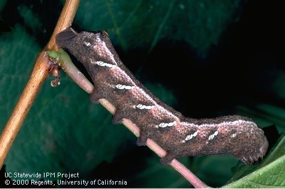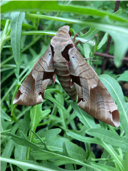Aug 18, 2023
Turns out this one is a friend. Grapevine or Achemon Sphinx Moth, Eumorpha achemon, is fairly uncommon but a native to North America. It is in the family Sphingidae, the hawkmoths, which is also the family for white-lined sphinx moths and tomato hornworms that are so common in our landscapes and gardens. It has brown, pink and cream markings that make it look sort of like a dried leaf - a stunning and symmetrical dried leaf! Adults are nocturnal and live for an average of one month.
The University of California reports that the huge 3 to 3 1/2 inch caterpillar eats both cultivated and wild grapes - leaves only - and is never common enough to be considered a pest. Its caterpillars look a little like tomato hornworms, and can sometimes be green but are usually a brownish pink color. When fully grown, the caterpillars burrow underground and form a reddish brown pupa the size of a short cigar.
Apart from this particular moth being beautiful, why should we create habitat in our yards and gardens for moths, even if this means putting up with some holes in our grape leaves? Moths are important, though often overlooked, pollinators for flowering plants. They pollinate flowers that are not visited by bees and can pollinate the same flowers as bees but do so at night. Moths are also an important food source for birds, bats, owls and lizards.
Grapevine Sphinx moth is a welcome garden guest - it won't harm your prized tomatoes and will provide you with something beautiful to look at while you weed away the afternoon.
For more information:



